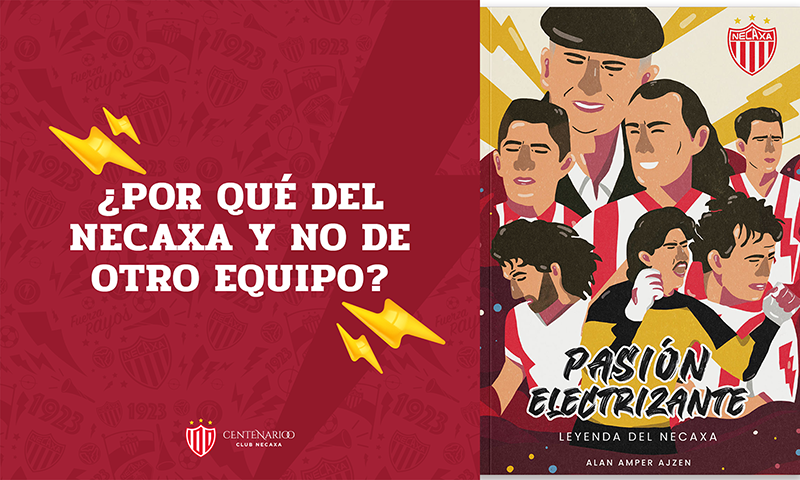
- 21 agosto, 2023
Aquí mi celebración al Necaxa por sus 100 años. ¡Felicidades queridos Rayos! Pasión electrizante. Leyenda del Necaxa es el libro oficial del Centenario de Necaxa, un homenaje a la afición y a su historia.
Here is my celebration of Necaxa on their 100th anniversary. Congratulations dear Rayos! Pasión electrizante. Leyenda del Necaxa is the official book marking the Centenary of Necaxa, a tribute to the fans and their history.
¡Hay jolgorio! El Centenario de la fundación de Club Necaxa es un hito en la cultura popular mexicana porque llegó a través de diferentes personajes a la televisión con Don Ramón y Jorge Ortiz de Pinedo, a la literatura con Juan Villoro como su máximo exponente, porque tiene hitos que no sirven para nada, y, sin embargo, la gente los recuerda. También es un ícono en la historia del futbol mexicano. Es el equipo que fue Campeonísimo en dos décadas, sólo Necaxa, ningún otro; el club que se disfrazó de la Selección Mexicana y ganó unos Juegos Centroamericanos. El club que dejó tal huella que revivió de dos desapariciones, incluso entre la primera y la segunda, a pesar de no ganar nada en ese lapso.
Hoy, cerré el círculo que construí con mucho esfuerzo y paciencia durante laaaaargos 16 años. Pasión electrizante. Leyenda del Necaxa es el libro del Centenario de Necaxa, un homenaje a la afición y a su historia. También es un homenaje al niño iluso que fui, ese que se disfrazaba de rojiblanco cada semana y soñaba despierto cada fin de semana. Finalmente, es el libro histórico oficial de Club Necaxa. No lo sabía, pero este libro, me formaría en tantos sentidos…
Let the festivities begin! The centenary of Club Necaxa’s foundation is a landmark in Mexican popular culture, as it has made its way to television through characters like Don Ramón and Jorge Ortiz de Pinedo, to literature with Juan Villoro as its highest exponent. It features milestones that, while seemingly inconsequential, are nonetheless remembered by many. It is also an icon in the history of Mexican football. Necaxa is the team that was the “Campeonísimo” in two decades—only Necaxa, no other club; the team that disguised itself as the Mexican National Team and won Central American Games. The club that left such an imprint that it revived from two disappearances, despite not winning anything during that time.
Today, I closed the circle that I exhaustively and patiently built over a long 16 years. Pasión electrizante. Leyenda del Necaxa is the book marking the Centenary of Necaxa, a tribute to the fans and their history. It is also a tribute to the naive child I once was, the one who dressed in red and white every week and daydreamed every weekend. Finally, it is the official historical book of Club Necaxa. I didn’t know it then, but this book would shape me in many ways…
Son 100 años de la fundación de un club que dio otra forma de vida a los trabajadores de la Compañía de Luz y Fuerza, que enamoró a las gradas con su fútbol práctico y al pie, y que de a poco, se arraigó en lo más profundo de la cultura popular mexicana. Son 100 años de infinitas historias, dentro y fuera de la cancha, que dan vida a los más profundos recuerdos románticos, y a una forma de ser y entenderse, al menos en el futbol.
En un seminario de periodismo deportivo en la universidad, descubrí un libro muy especial, que desataría una odisea tan larga, fortuita, de espíritu inquebrantable y especiada, como la historia misma que relata Azulgrana. Historia actualizada del equipo Atlante, de Heriberto Murrieta. Devoré el libro en una noche, lo compré para mi papá –atlantista de cepa–, pero es la base fundamental de la historia del libro del Necaxa. Ahí mismo, pregunté por el de Rayos, pero me dijeron que no existía. No lo creí, cómo no existe un libro de un equipo como Necaxa, los Rayos del Necaxa. Así que, tras una larga búsqueda en algunas bibliotecas públicas de la CDMX, en la Hemeroteca Nacional de la UNAM, descubrí con asombro y pesadumbre que no existía cosa así. Decidí hacerlo yo. Por amor a la camiseta, por crear algo que yo mismo quisiera tener como aficionado. Y así comencé, con una presentación y un índice muy básicos, con la ilusión del niño que se enamoró del Necaxa.
Hoy con orgullo, puedo presumir que Pasión electrizante. Leyenda del Necaxa ya forma parte de dos bibliotecas donde investigué y escribí: Hemeroteca Nacional de México en la UNAM y Biblioteca Francisco Xavier Clavigero en la Universidad Iberoamericana, mi casa de estudios.

No lo sabía, pero este libro de a poco me formaría. Aprendí a entrevistar, a hacer crónicas, y, sobre todo, a escribir… y vaya que escribí, rescribí y volví a escribir; incluso el editor, el impresor, todos a mí alrededor me decían que parara, que tendría que haber un límite. Me permitió tener el privilegio y honor de conocer a esos personajes que marcaron mi memoria con la playera del Necaxa. Aquellas entrevistas, volvían a encender mi pasión como aficionado, esa que a veces parece que se esfuma cuando Necaxa no gana ni el volado. Pero ahí están las historias en el libro Pasión electrizante. Leyenda del Necaxa, para reencender ese frenesí salvaje que no entendía de nada más que no fuera futbol, la casaca rojiblanca y goles.
Necaxa, bien dice el escritor Juan Villoro, ha perfeccionado el arte de perder en 100 años, pero entre esos capítulos sombríos, hubo destellos de luz, él último, cuando Pablo Quattrocchi, el Jefe, nos devolvió con huevos la ilusión de ser aficionados a un equipo especial, nos permitió identificarnos nuevamente con algo. Nos permitió soñar otra vez. Orgulloso, puedo decir que con él tuve una de las entrevistas más entrañables que hecho, precisamente, para el libro del Necaxa. El sueño del Pibe se seguía cumpliendo de a poco, puedo decirme amigo de uno de mis referentes en el futbol.
Hoy, orgulloso, cierro el círculo del libro del Necaxa, como lo llamo comúnmente. Orgulloso de contar con la participación de los extraordinarios periodistas Heriberto Murrieta y de Alberto Lati, referentes en mi forma de hacer periodismo. Cumplí el sueño del pibe, ese que se emociona nervioso –aún hoy– cada vez que habla con ellos, alguna de las leyendas del Necaxa o Juan Villoro; platiqué con Alex Aguinaga, ese jugador que todos queremos ser; con Ivo Basay desayunamos mientras hacíamos la entrevista en otra conversación pasional. Personajes que, como tarjetas coleccionables de hologramas, atesoraba con devoción en las páginas del libro. Infinitas gracias a todos por compartir sus experiencias con la afición del Necaxa: Alex Aguinaga, Carlos Albert, Alexandro “Mostro” Álvarez, Ivo Basay, Octavio “Picas” Becerril, Brayan Beckeles, Enrique Borja, Salvador Cabrera, Horacio Cervantes, Justino Compeán, Gerardo Esquivel, Gerardo Galindo, Alberto García Aspe, Yosgart Gutiérrez, Luis “Matador” Hernández, Manuel Lapuente, Arturo Javier Ledesma, Mario de Luna, Diego Martínez, Alfredo Morales Shaadi Q.E.P.D., Alfredo “Chango” Moreno Q.E.P.D., Nicolás Navarro, José Manuel Núñez Ochoa Q.E.P.D., Guillermo “Chatito” Ortiz Q.E.P.D., Don Marcial “Ranchero” Ortiz Q.E.P.D., Ricardo Peláez, Fabiano Pereira, Luis Ernesto Pérez Martínez, Rodrigo Prieto, Pablo “El Jefe” Quattrocchi, Don Hugo y Doña Susana Quattrocchi, Adolfo Ríos, Iván Vázquez Mellado, Xavier Sol, Esteban Valdés, Sergio Vázquez, Eduardo Vilches, Juan Villoro, Sergio “Ratón” Zárate; El Aficionado de Puro Corazón, El Necio, Comando Rojiblanco, Miguel Acosta.
It’s been 100 years since the founding of a club that transformed the lives of the workers at the Mexican Light and Power Company, enchanted the stands with its straightforward, on-the-ground football, and gradually embedded itself deep within Mexican popular culture. It’s a century of countless stories, both on and off the field, breathing life into the most profound romantic memories and shaping a way of being and understanding, at least in the realm of football.
During a sports journalism seminar at university, I discovered a very special book that would spark an odyssey as long, fortuitous, unbreakable, and spiced as the history it recounts: Azulgrana. Historia Actualizada del Equipo Atlante by Heriberto Murrieta. I swiftly read the book in one night, bought it for my dad—an Atlante fan through and through—but it became the fundamental basis for the history of the Necaxa book. I asked about the Rayos book, but was told it didn’t exist. I didn’t believe it; how could there not be a book about a team like Necaxa, the Rayos del Necaxa. So, after a lengthy search through some public libraries in Mexico City and the National Hemeroteca at UNAM, I discovered with astonishment and regret that such a thing did not exist. I decided to create it myself. Out of love for the colours, to create something I would want as a fan. And so I began, with a very basic presentation and index, with the excitement of the child who fell in love with Necaxa.
Today, proudly, I can say that Pasión electrizante. Leyenda del Necaxa is now a part of two libraries where I conducted my research and wrote: the Hemeroteca Nacional de México at UNAM and the Francisco Xavier Clavigero Library at Universidad Iberoamericana, my alma mater.
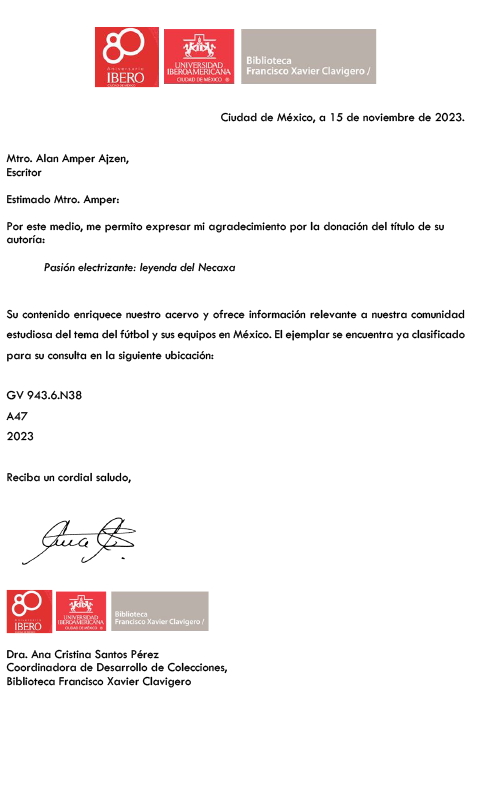
I didn’t know it then, but this book would slowly shape me. I learned to interview, to write chronicles, and, above all, to write… and indeed, I wrote, rewrote, and wrote again; even the editor and printer, everyone around me, told me to stop, that there should be a limit. It allowed me the privilege and honour of meeting those figures who marked my memory with Necaxa’s jersey. Those interviews rekindled my passion as a fan, a passion that sometimes seems to dwindle when Necaxa doesn’t win not even the coin toss. But there are the stories in Pasión Electrizante. Leyenda del Necaxa to reignite that wild frenzy that understood nothing but football, the red-and-white jersey, and goals.
Necaxa, as writer Juan Villoro says, has perfected the art of losing in 100 years, but amidst those dark chapters, there were flashes of light. The last one, when Pablo Quattrocchi, “El Jefe,” restored our hope of being fans of a special team, allowed us to identify ourselves once more with something. He allowed us to dream again. Proudly, I can say that I had one of the most cherished interviews with him, specifically for Necaxa’s book. The kid’s dream was slowly coming true; I can call myself a friend of one of my football idols.
Today, with pride, I close the circle of Necaxa’s book, as I commonly call it. Proud to have the contributions of the extraordinary journalists Heriberto Murrieta and Alberto Lati, references in my approach to journalism. I fulfilled the dream of the kid who nervously gets excited—even today—every time he talks with them, with any of the Necaxa legends, or with Juan Villoro; I spoke with Alex Aguinaga, that player everyone wants to be; with Ivo Basay, we had breakfast while conducting an interview in another passionate conversation. Characters who, like holographic collectible cards, I cherished with devotion on the pages of the book. Endless thanks to everyone for sharing their experiences with Necaxa fans: Alex Aguinaga, Carlos Albert, Alexandro “Mostro” Álvarez, Ivo Basay, Octavio “Picas” Becerril, Brayan Beckeles, Enrique Borja, Salvador Cabrera, Horacio Cervantes, Justino Compeán, Gerardo Esquivel, Gerardo Galindo, Alberto García Aspe, Yosgart Gutiérrez, Luis “Matador” Hernández, Manuel Lapuente, Arturo Javier Ledesma, Mario de Luna, Diego Martínez, Alfredo Morales Shaadi R.I.P., Alfredo “Chango” Moreno R.I.P., Nicolás Navarro, José Manuel Núñez Ochoa R.I.P., Guillermo “Chatito” Ortiz R.I.P., Don Marcial “Ranchero” Ortiz R.I.P., Ricardo Peláez, Fabiano Pereira, Luis Ernesto Pérez Martínez, Rodrigo Prieto, Pablo “El Jefe” Quattrocchi, Don Hugo and Doña Susana Quattrocchi, Adolfo Ríos, Iván Vázquez Mellado, Xavier Sol, Esteban Valdés, Sergio Vázquez, Eduardo Vilches, Juan Villoro, Sergio “Ratón” Zárate; El Aficionado de Puro Corazón, El Necio, Comando Rojiblanco, Miguel Acosta.





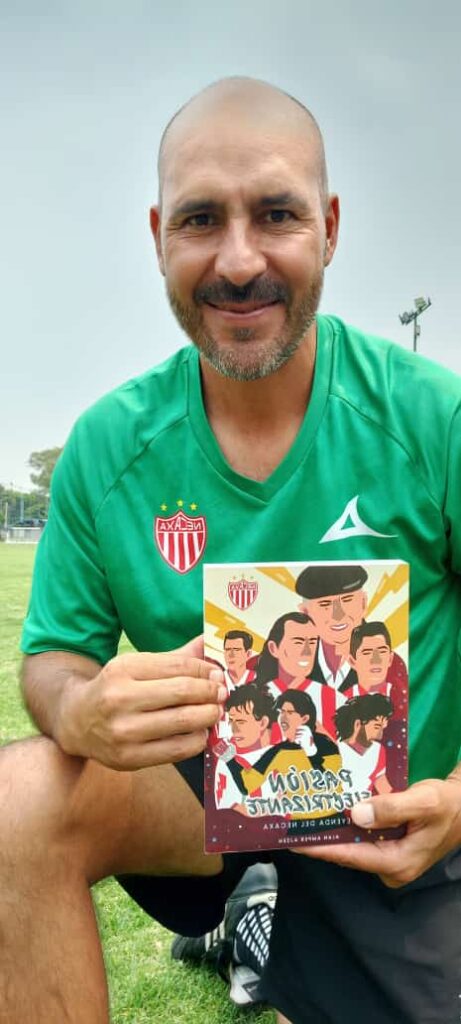
Antes no entendía lo que significa, pero tener el honor y privilegio de platicar con Don Marcial Ortiz, de los Once Hermanos, es una experiencia que me dejó marcado como aficionado y como periodista. Aquella tarde con él y con el Chatito Ortiz marcaron, prácticamente como ninguna otra, la estructura del libro y qué debía incluir. Y qué decir del privilegio de contar con el apoyo y acceso a su colección personal, de la familia del Poeta Lozano, Don Tomás y Rolando, quienes orgulloso siempre estuvieron abiertos a participar.
Soñaba con ser como Aguinaga, Zárate o Basay aunque me parecía más, por mi estilo de juego –lo que sea que signifique eso a los 8 u 11 años–, a Uwe Wolf; aunque a decir verdad, sin saberlo entonces, hacía algo mucho mejor mientras pateaba la pelota en la azotea del edificio donde vivía mi abuela… es contar historias. Imaginaba escenarios y personajes, narraba para mí –y uno que otro vecino tal vez– y después recreaba esas mismas historias, como el milenario programa de televisión Acción.
No entiendo nada y, sin embargo, entiendo todo.
Hoy entiendo todo y sigo sin entender, porque no tiene sentido. Bah, sí tiene, al menos uno: Toda gira entorno al dinero. Esa es otra historia de nuestro futbol.
Este mismo libro me dio mi primer trabajo, Jefe de Prensa y Comunicación de Club Necaxa –muchas gracias por la confianza querido Mauricio Lanz–, y me regaló mi primer amigo en el futbol, Damon, con quien he vivido de todo desde hace 12 o 13 años. Viví el segundo descenso desde adentro, lo sufrí, y me hice “más” necaxista lo que sea que eso signifique. En ese mismo camino también encontré gente muy valiosa en lo profesional, más en lo personal como César Enríquez, Xavi Sol, Juan Carlos Zamora, Rodrigo López, Javier Romero, José Antonio Casas, José Luis Cuevas, Pako Domínguez, y un sinfín de otros nombres que seguramente estoy dejando en el tintero.
También conocí a Juan Terrazas, el monero, director del Museo de la Caricatura en CDMX y quien fue el primer colaborador que me ayudó a reemplazar las fotos que cuestan mucho dinero, con espectaculares caricaturas e ilustraciones, después se unieron Murdok Heras, Ana Paula Cámara, Carlos Cavazos, José Bernal, Carlos Romero, Barrilete Cósmico, y Llegas Pacheco. El caso de Tsebal Chon es muy especial, pues retrata los significados de Necaxa a partir de la investigación de Javier Romero; Tsebal Chon es una mujer indígena ajena al futbol e interpreta – desde mi perspectiva, con brillantez– con su ilustración, esas explicaciones, sobre todo, la totonaca; a ella la conocí porque una amiga difundió una de sus ilustraciones, su arte me enamoró y después de leer un poco de su trayectoria, también me identifico con muchos de sus valores. Ahí radica su importancia. Todos los artistas complementan el libro y realzan con sus trazos, nuestras memorias. Qué privilegio conocerlos y colaborar en este camino. A todes, muchas gracias.
Cierro el círculo también para mi familia, amigos, mi novia, porque ellos sufrieron y sonrieron conmigo en esta larga aventura. Aguantaron desplantes, que no fuera o estuviera porque el Necaxa se “jugaba” algo importante para el libro, y festejaron. Me acompañaron a entrevistas, viajamos a Aguascalientes y otros estadios, escribimos juntos en la biblioteca. El libro no sería sin esa gente tan especial.
El libro lo comencé a escribir con la visión de un niño que jugaba en la azotea a crear sus propias aventuras, y que después, cumplió el sueño de relatarla historia del equipo de sus amores.
Ese niño soñador, necaxista: extraño esos partidos en la azotea del edificio en la colonia Roma del Distrito Federal, donde vivía mi abuela cuando era niño. El sol caía a plomo, las porterías las marcaba con botes de detergente o suavizante. Era un jugador del montón, también la estrella. Corría y narraba. También era el árbitro y equipo visitante. Terminaba agotado. Lalá nos compartía medias naranjas para refrescarnos todos, como equipo. En las noches de domingo, repasaba las mejores jugadas del fin de semana, lo hacía en cámara lenta para que papá y mamá pudieran apreciar mi magia con el balón. No siempre ganaba Necaxa, a veces, muy pocas, también el Atlante.
Extraño esos días cuando, inocente, esperaba impaciente que mi papá terminara de leer el periódico para ver la sección deportiva y ver qué jugadores se iban y llegaban a Necaxa; al Atlante, su equipo, o Pumas, el de mi mamá, aunque ella no lo seguía en absoluto. Extraño ese nerviosismo de leer que un “héroe” rojiblanco fuera a vestir la casaca del América… era el preámbulo de varias decepciones en una misma. Y así fue muchas veces, otras no.
No entendía nada.
Extraño llorar porque quería conocer al “Matador” Hernández y no podía, no sabía cómo. Alguna vez entré a la cancha del Estadio Azteca en un Necaxa vs Atlante o al revés. En la banca estaba Alex Aguinaga, mi máximo referente en el futbol hasta ese momento, y yo boquiabierto, sin poder dejar de admirarlo; él sonriente. Antes del partido, posaba con el equipo titular ese día para la foto oficial y me sentía futbolista, imitaba sus mañas y me generaba ansiedad no conseguir sus autógrafos. Extraño sentir que se trata de sólo un juego.
¡Qué honor ser el autor del libro oficial histórico del Necaxa! Siempre estaré agradecido con la directiva de Santiago Tinajero por la apertura y la sociedad para que fuera posible; vaya que trabajé con diferentes administraciones, con esta fue posible y eso merece mi reconocimiento.
Orgulloso cierro el círculo viendo que aficionados, periodistas, narradores, incluso el presidente de la Liga MX, utilizan la frase “pasión electrizante” para hablar del Centenario del Necaxa. Algo absolutamente inesperado y que es, automáticamente, esa gasolina para seguir siendo periodista, un apasionado de contar historias y aficionado del Necaxa.
¡Felicidades a la espectacular afición del Necaxa! Esos que siempre estamos, aunque gane; esos que viajamos, que nos disfrazamos con casaca rojiblanca, que nos emocionamos con nuestros héroes, que siempre creemos que el Necaxa, tal vez, sólo tal vez, ahora sí gané, aunque sea para variar o por equivocación. Yo no sería quien soy sin mis camaradas necaxistas. Infinitas gracias también.
I didn’t understand it before, but having the honour and privilege of talking with Don Marcial Ortiz, one of the Once Hermanos (Eleven Brothers), is an experience that left a mark on me as a fan and as a journalist. That afternoon with him and Chatito Ortiz practically shaped the book and what it should include like no other. And what can I say about the privilege of having support and access to his personal collection, from the Lozano family, Don Tomás and Rolando, who were always proudly open to participating.
I dreamed of being like Aguinaga, Zárate, or Basay, though I felt more like Uwe Wolf, given my style of play—whatever that means at 8 or 11 years old—but to tell the truth, without knowing it then, I was doing something much better while kicking the ball on the rooftop of my grandmother’s building… it’s telling stories. I imagined scenarios and characters, commentated the game for myself—and maybe one or two neighbours—and then recreated those same stories, like the millennial tv program Acción.
I don’t understand anything and yet, I understand everything.
Today I understand everything and still don’t understand, because it makes no sense. Well, it does have at least one meaning: Everything revolves around money. That’s another story of our football.
This very book gave me my first job, Head of Press and Communication for Club Necaxa—thank you very much for the trust, dear Mauricio Lanz—and it gave me my first friend in football, Damon, with whom I have lived through everything for the past 12 or 13 years. I experienced the second relegation from the inside, suffered it, and became “more” Necaxista, whatever that means. On that same path, I also found very valuable people professionally, but more so personally, like César Enríquez, Xavi Sol, Juan Carlos Zamora, Rodrigo López, Javier Romero, José Antonio Casas, José Luis Cuevas, Pako Domínguez, and a myriad of other names that I am surely leaving out.
I also met Juan Terrazas, the cartoonist, director of the Museum of Caricature in CDMX, who was the first collaborator to help me replace the costly photos with spectacular caricatures and illustrations. Later, Murdok Heras, Ana Paula Cámara, Carlos Cavazos, José Bernal, Carlos Romero, Barrilete Cósmico, and Llegas Pacheco joined. Tsebal Chon’s case is very special, as it depicts the meanings of Necaxa based on Javier Romero’s research; Tsebal Chon is an indigenous woman outside of football who interprets—with brilliance, from my perspective—with her illustration those explanations, especially the Totonac; I met her because a friend shared one of her illustrations, her art captivated me, and after reading a bit of her background, I identified with many of her values. There lies her importance. All the artists complement the book and enhance our memories with their strokes. What a privilege to know and collaborate with them. To all of you, many thanks.
I close the circle also for my family, friends, my girlfriend, because they suffered and smiled with me through this long adventure. They endured my absences, the times I was away because Necaxa was “playing” something important for the book, and celebrated with me. They accompanied me to interviews, we traveled to Aguascalientes and other stadiums, and wrote together in the library. The book would not be possible without those special people.
I began writing the book with the vision of a child who played on the rooftop, creating his own adventures, and who later fulfilled the dream of narrating the story of the team he loved.
That dreamy child, Necaxista: I miss those matches on the rooftop of the building in the Roma neighborhood of Mexico City, where my grandmother lived when I was a child. The sun would fall like lead, and I would mark the goals with detergent or softener bottles. I was an average player, also the star. I ran and commentated the game. I was also the referee and the visiting team. I would end up exhausted. Lalá would share orange slices with “us all” to refresh us, as a team. On Sunday nights, I would review the best plays of the weekend, doing it in slow motion so that Mom and Dad could appreciate my magic with the ball. Necaxa almost always won, and sometimes—very rarely—also did Atlante.
I miss those days when, innocently, I impatiently awaited my dad to finish reading the newspaper to see the sports section and find out which players were coming and going to Necaxa; Atlante, his team, or Pumas, my mom’s team, although she didn’t follow it at all. I miss that nervousness of reading that a red-and-white “hero” was going to wear the América jersey… it was the prelude to several disappointments in one. And so it was many times, and sometimes, it wasn’t.
I didn’t understand anything.
I miss crying because I wanted to meet “Matador” Hernández and couldn’t, didn’t know how. I once entered the field at Estadio Azteca during a Necaxa vs Atlante match or vice versa. On the bench was Alex Aguinaga, my ultimate football idol at that moment, and I was open-mouthed, unable to stop admiring him; he smiled. Before the game, I posed with the starting team for the official photo, and I felt like a footballer, imitating his moves and anxiously seeking his autograph. I miss feeling like it was just a game.
What an honour to be the author of the official historical book of Necaxa! I will always be grateful to Santiago Tinajero’s board for the openness and partnership that made it possible; indeed, I worked with different administrations, but with this one, it was achievable, and that deserves my recognition.
Proudly, I close the circle seeing that fans, journalists, commentators, even the president of Liga MX, use the phrase “electrifying passion” to talk about Necaxa’s Centenary. Something completely unexpected and which, automatically, is the fuel to continue being a journalist, a passionate storyteller, and a Necaxa fan.
Congratulations to the spectacular Necaxa fans! Those of us who are always there, win or lose; those of us who travel, who dress in red-and-white jerseys, who get excited with our heroes, who always believe that Necaxa, maybe, just maybe, will win this time, even if only by chance or mistake. I wouldn’t be who I am without my Necaxista comrades. Endless thanks to you all as well.

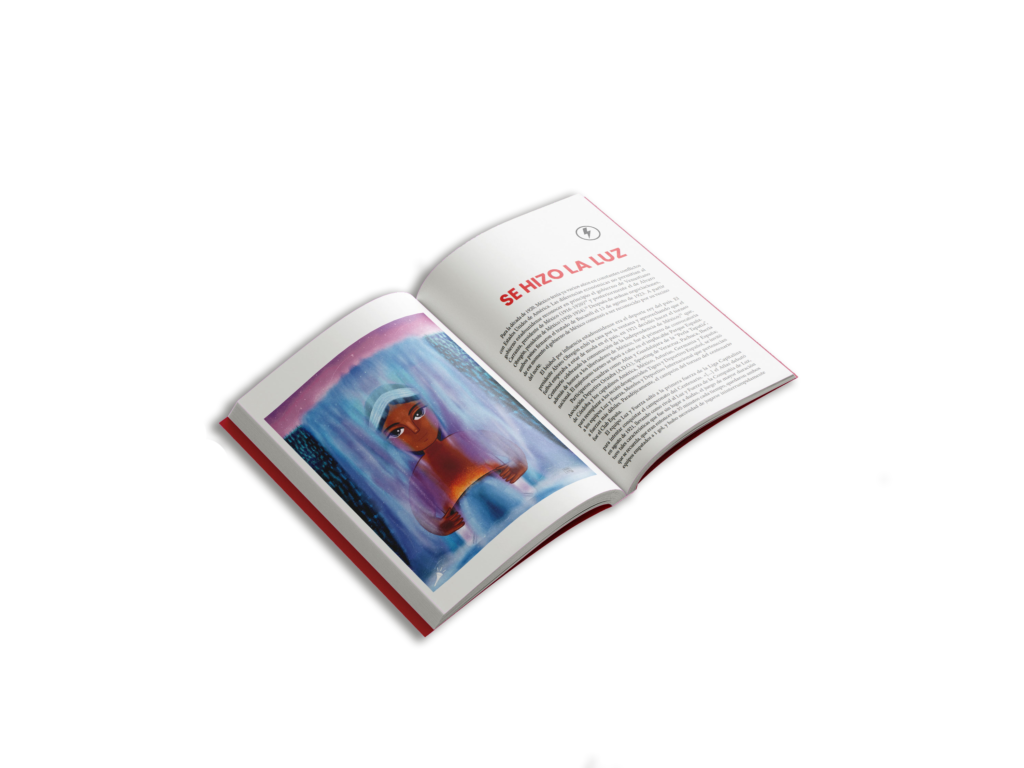
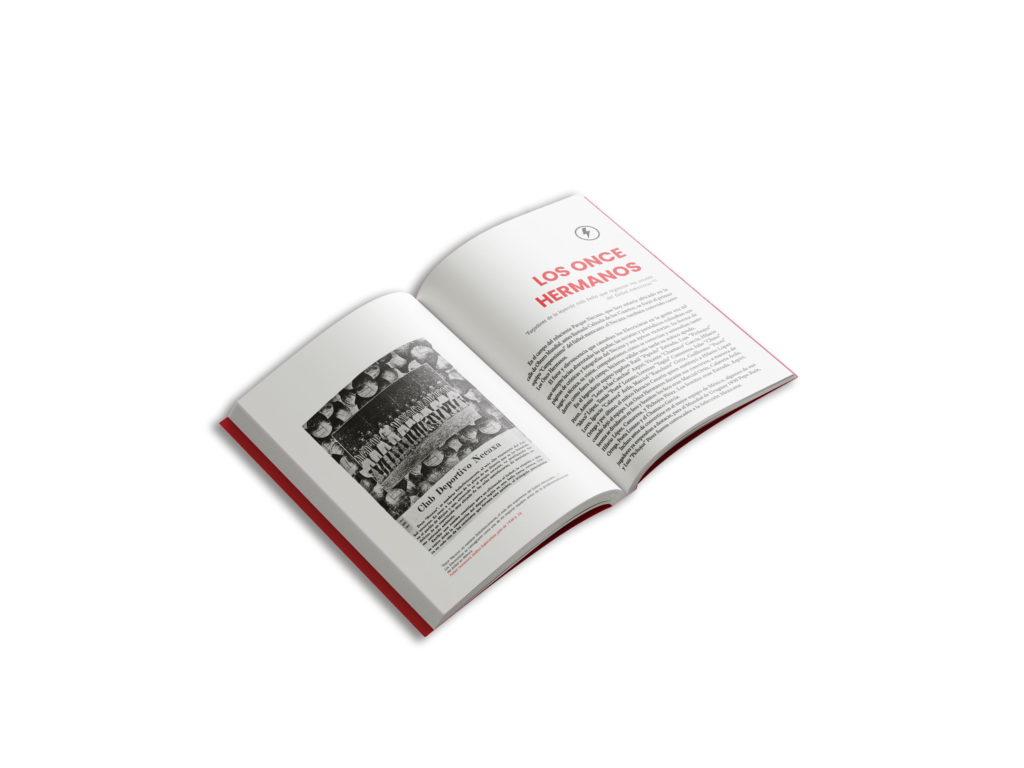
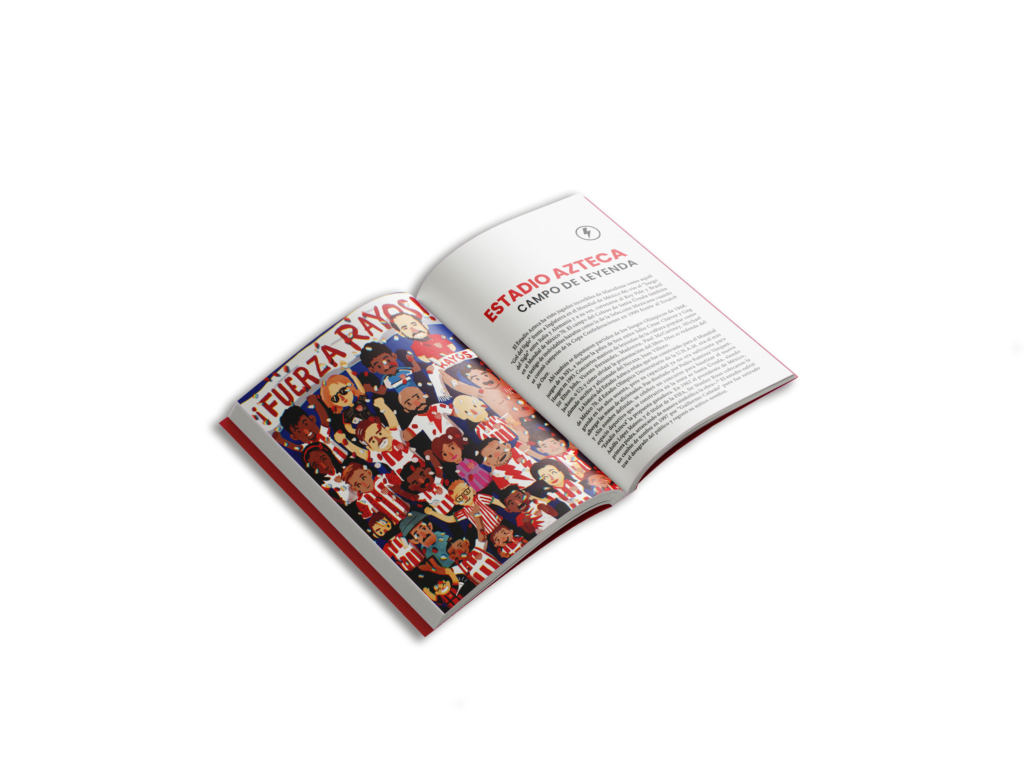
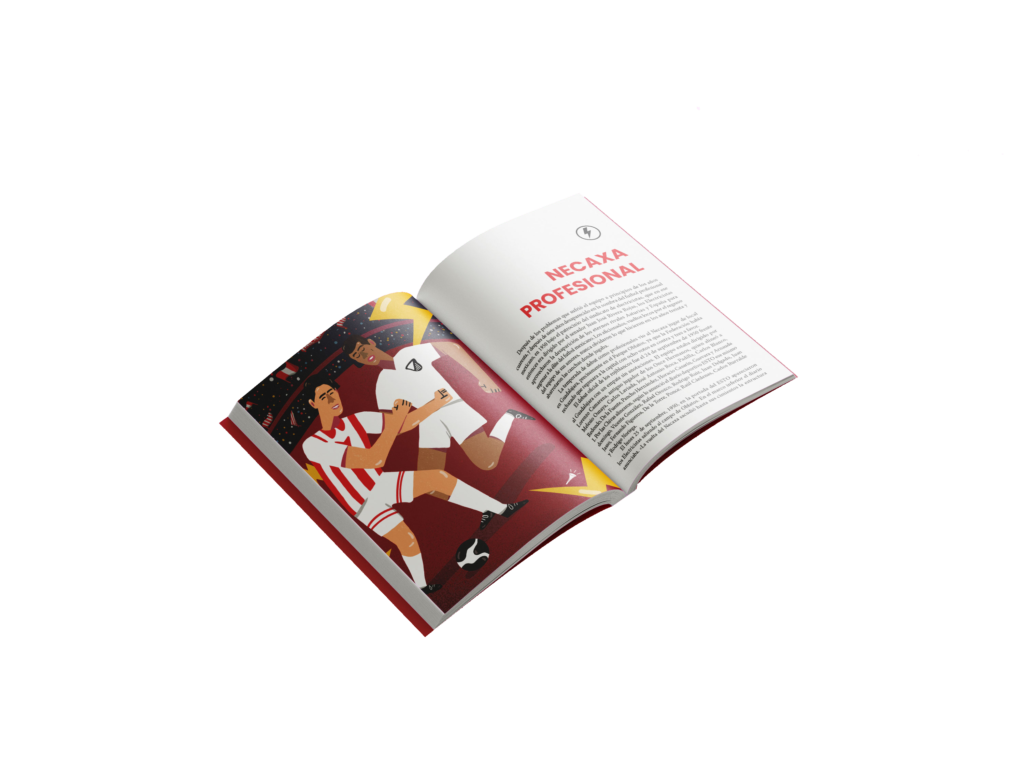

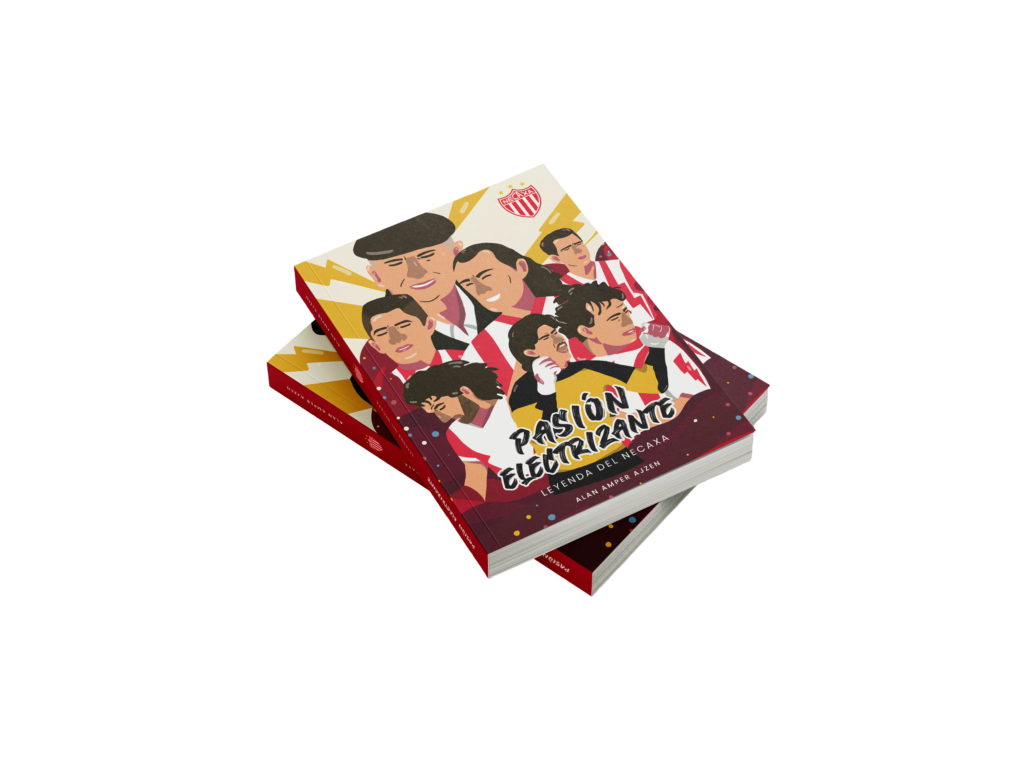
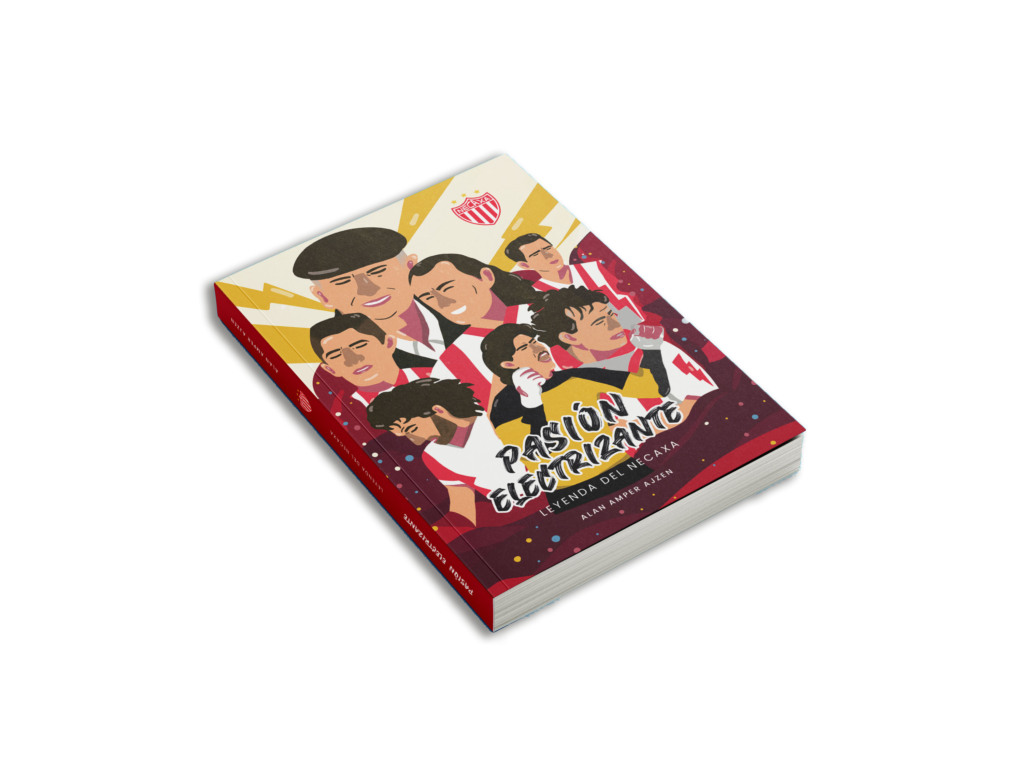
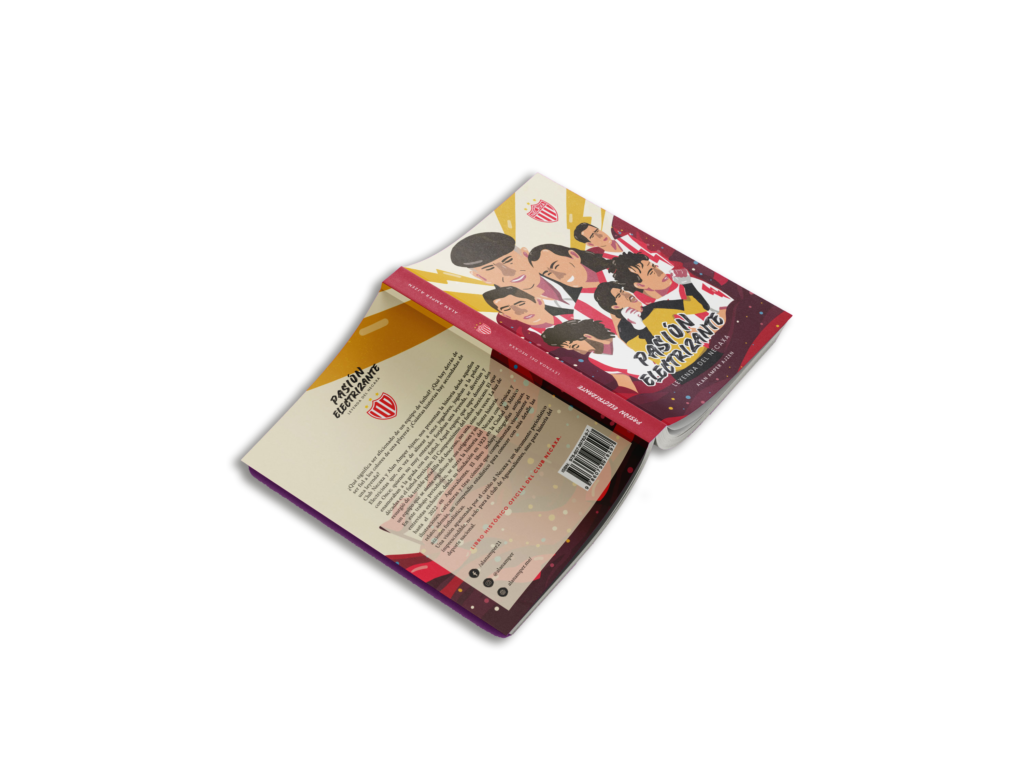
Esta es una actualización del 101 aniversario, 21 de agosto de 2024.
¡Hoy, Club Necaxa cumple 101 años! Yo celebro al equipo de la mejor manera que puedo hacerlo, resaltando aquellos mensajes, reseñas y opiniones que recibí desde su publicación, que sirven como gasolina para seguir, porque esta historia no termina aquí.
Primero lo primero dicen por ahí, y es que Jesús Valencia y Manuel Torres Cerón hicieron la exposición Nakaksan: Centenario del Campeonísimo en la Hemeroteca Nacional de México de la UNAM, donde tuve el privilegio y honor de que expusieran el libro del Necaxa. Infinitas gracias.
Sin más, aquí algunos ejemplos de aquellos emotivos mensajes que he recibido en diferentes canales, también algunas entrevistas que me llenan de orgullo.
This is an update for the 101st anniversary, August 21, 2024.
Today, Club Necaxa turns 101 years old! I celebrate the team in the best way I can, highlighting those messages, reviews and opinions that I received since its publication, which serve as fuel to continue, because this story does not end here.
First things first, and that is that Jesús Valencia and Manuel Torres Cerón did the exhibition Nakaksan: Centenario del Campeonísimo at the National Newspaper Library of Mexico at UNAM, where I had the privilege and honor of having them exhibit the Necaxa book. Infinite thanks.
Without further ado, here are some examples of those emotional messages that I have received on different channels, as well as some interviews that fill me with pride.
Cumplí, a mi manera, el sueño del pibe. Pasión electrizante. Leyenda del Necaxa es un sueño de vida hecho realidad.
¡Feliz primer Centenario querido Necaxa! ¡Fuerza Rayos!
Alan
Si llegaste hasta aquí y no tienes Pasión electrizante. Leyenda del Necaxa, descúbrelo en pasionelectrizante.com
I fulfilled, in my own way, the kid’s dream. Pasión Electrizante. Leyenda del Necaxa is a dream of life come true.
Happy first Centenary, dear Necaxa! Strength, Rayos!
Alan
If you’ve reached this point and don’t have Pasión Electrizante. Leyenda del Necaxa, discover it at pasionelectrizante.com
Presentación oficial en el Auditorio Once Hermanos de Casa Club Necaxa, Aguascalientes.
Official presentation at the Once Hermanos Auditorium, Casa Club Necaxa, Aguascalientes.